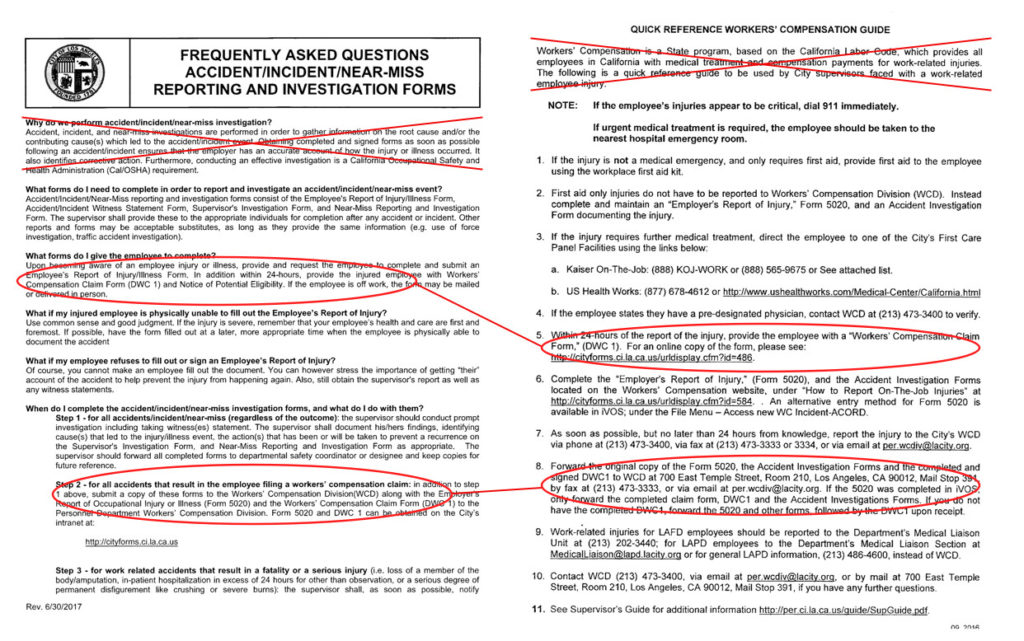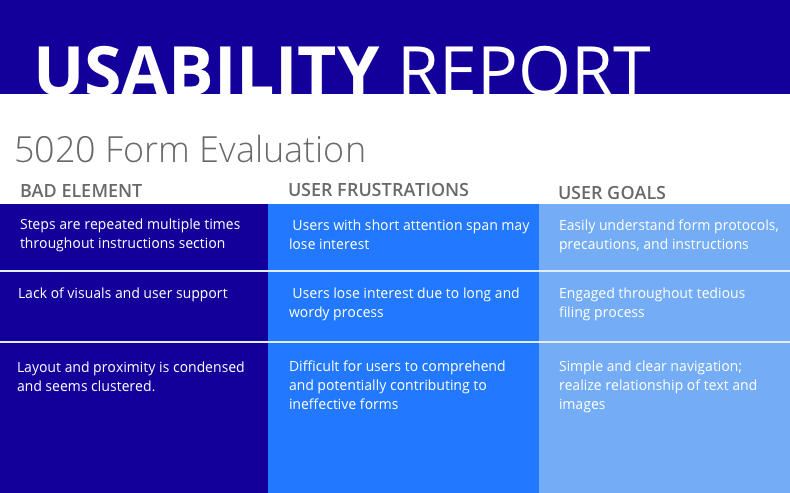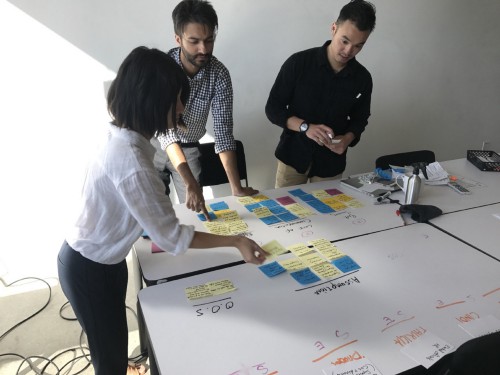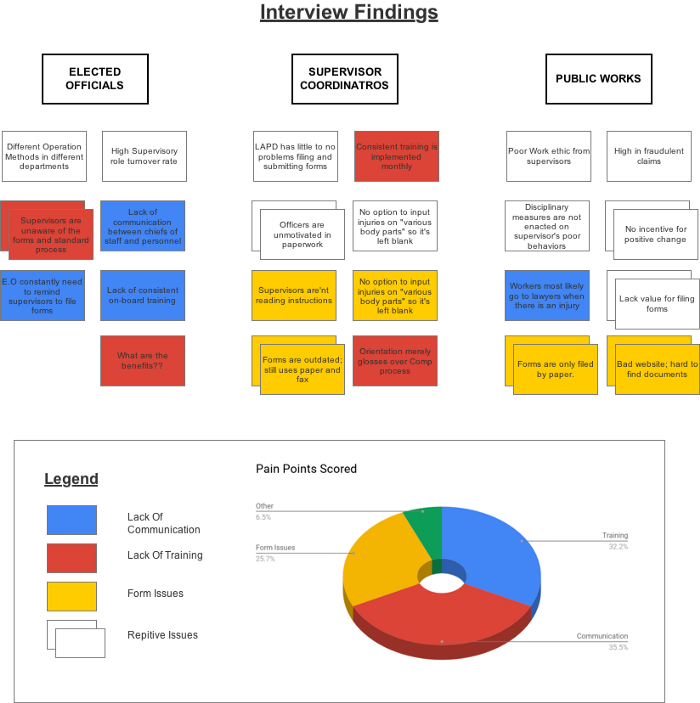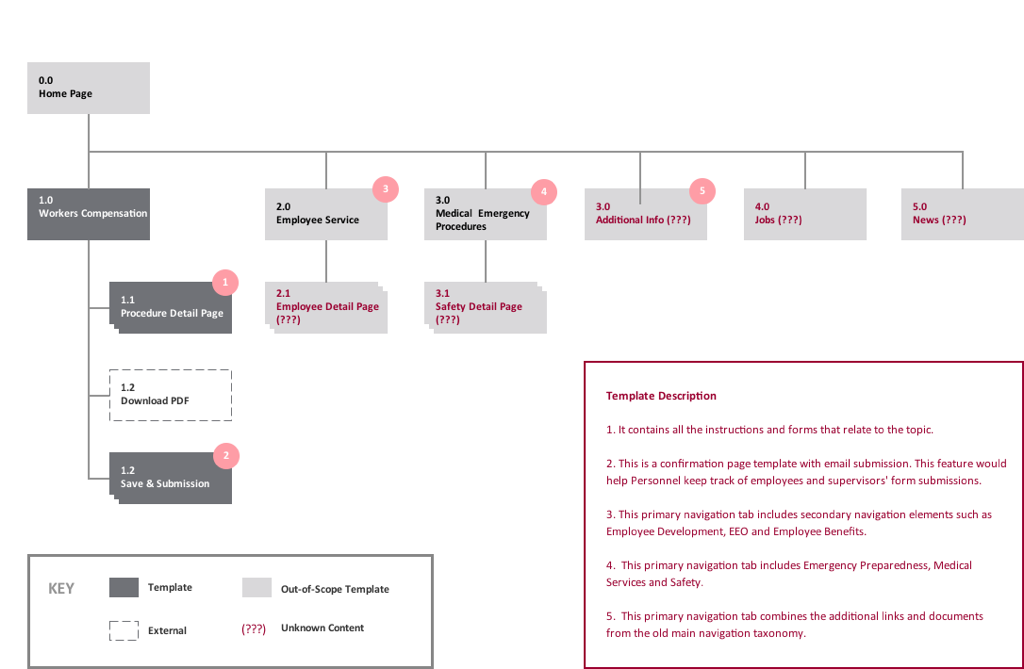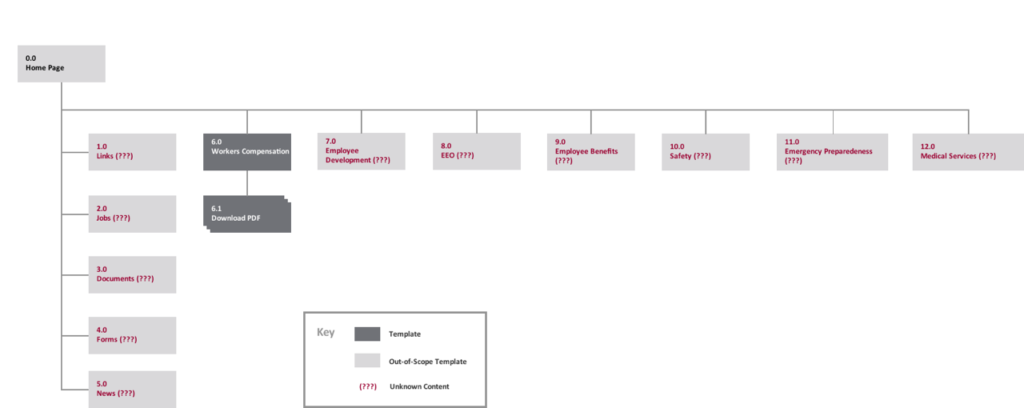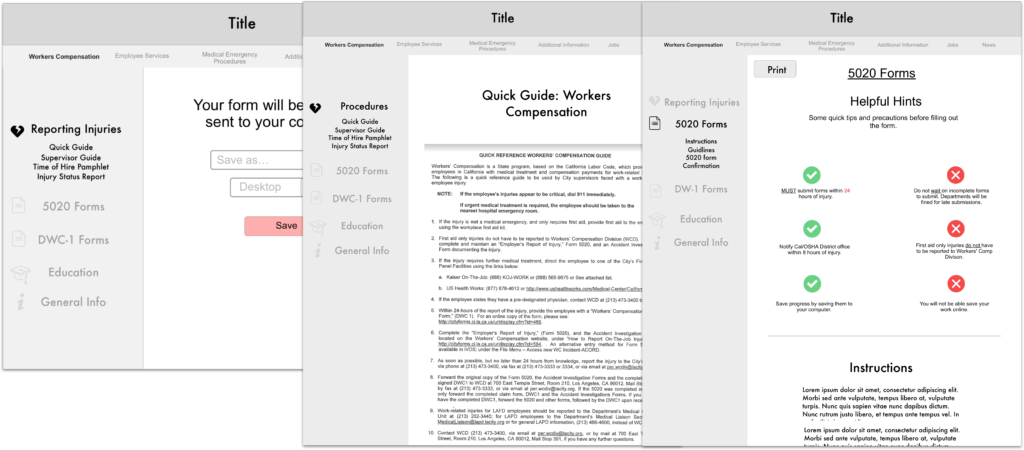2017
YEAR
DELIVERABLES
UX/UI
User Research Findings Report
Roadmap
TEAM
UX: Me, Emma C., Tikku S.
Operations Innovations: Shmel G., Juan V., Tyronne T.
Worker's Comp: Going Digital
The Mayor’s Operations Innovation Team (“O-Team“) is a partnership between the Office of the Mayor, the Mayor’s Fund for Los Angeles, and the L.A. Coalition for the Economy and Jobs created to improve the City’s business systems and operational efficiencies.
My brief was to investigate the current system and its underlying issues as well as redesign the paper forms and online portal to facilitate timely and complete submissions.
DISCOVERY
As part of our kick-off meeting, we learned the city of Los Angeles had been incurring large monetary penalties from the state of California due to the untimely and incomplete submittal of workers’ compensation forms by department supervisors. To further investigate this issue, we need to first learn about the system and its users.
USABILITY INSPECTION
The first step in improving the workers’ compensation system was to assess the current user experience through a Heuristic Evaluation of key touchpoints in the process. Because forms going through iVOS (Claims management system) and forms from the state of California could not be redesigned, we began with an evaluation of the instructions for these workers’ comp forms as well as the user interface of the supervisors’ online portal for form submissions.
In evaluating their compliance with recognized usability principles and best practices, we were able to pinpoint weaknesses and strengths in the system and identify areas of concern.
USER INTERVIEWS
We began the research process by identifying key departments and groups within the city of Los Angeles to interview as a sample of users submitting workers’ compensation forms. First, we interviewed elected officials and got insights into the impact of personnel shifts. Then we interviewed one department that was timely with their form submissions — LAPD Sworn Services — and one department that was consistently late with their submissions — Public Works, Parks & Recreation.
INTERVIEW FINDINGS
Through these interviews, we identified specific issues within the form design, and also that the main cause of the untimely and incomplete submissions of forms was due to:
- lack of communication (i.e. awareness of the process)
- lack of training (i.e. successful submissions within the LAPD was a direct result of the training of its supervisor)
- lack of disciplinary actions (i.e. supervisors with poor work ethics did not submit forms timely, if at all and there were no consequences for such performance)
- issues pertaining to the forms (i.e instructions are often skipped and forms are difficult to locate.)
DETERMINE CONSTRAINTS
After synthesizing our research, we also defined our limitations before moving on with our design process:
- IVOS system cannot be altered
- State forms cannot be altered (instructions section is not state-mandated)
- The high turnover rate cannot be altered
- Work ethics is a form of human error; therefore would require more time to consult
DEFINE MVP
Our investigation gave us a clear understanding of our users and the current system in which they use for worker's compensation. It is clear to us that the redesign, given the constraints, should focus around our 3 main categories: communication, form issues, and awareness for disciplinary action.
- Improvements to the current WC guide layout and verbiage
- Redesign digital form submission
- Reorganize portal layout so that it easier to locate forms
DESIGN
I approached the design process with site mapping. This tool allowed the team to determine inefficiencies around the existing navigation so that we can suggest a new workflow for our users. Next, I designed wireframes which focuses on improvements to the digital form submissions. After wireframes were approved by our client/dev, our team designed a prototype that captures branding and interaction design.
WIREFRAMES
The new design brings in a new section called "Helpful Hints" which is placed at the very start of the filing process. These bullet points summarize important details found in the worker's comp guide which we found users to disregard due to the length and repetitive format. Another significant addition to the forms brings in illustrations and an improved layout for steps. Our goal is to keep users engaged and increase visibility as users move forward with the filing process. We hope to decrease the error of entry and increase form completeness in a single session.

PROTOTYPE & TESTING
Using Principle, we then built a prototype of the online form-filing system and provided a roadmap of next steps to fully test the digital transition. This feedback was necessary to identify any technological constraints users may face from the new digital platform.


